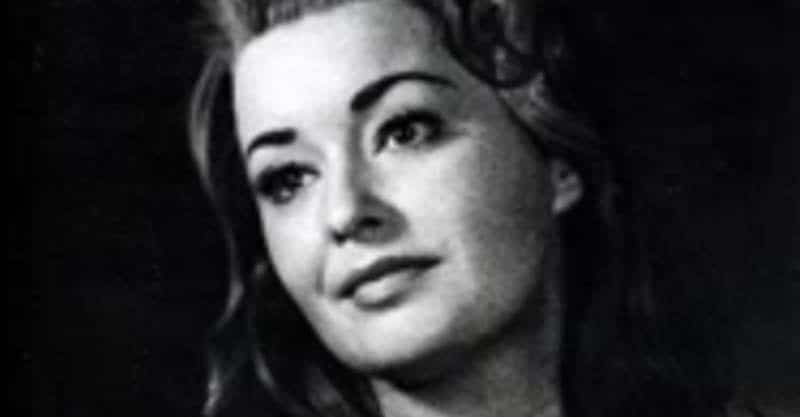
Few other art forms can capture raw emotions the way opera does. With memorable vocals, beautiful lyrics, and entrancing music, each performance is an opportunity for performers to show the full range of human emotions, including sadness.
From tragic death to unrequited love, these sad opera songs tell timeless stories about sorrow.
“Sono Andati” by Giacomo Puccini
Song year: 1895
Puccini’s La Boheme tells the story of four artists living in Paris in the 1830s. One of them, Rodolfo, falls in love with the terminally-ill Mimi.
Their intense but doomed love story makes La Boheme a classic opera, and the bohemian lifestyle acts as a backdrop that brings this timeless story to life.
In “Sono Andati,” Rodolfo and Mimi reminisce about their first meeting. The lyrics might seem innocuous at first, but the duet quickly becomes heart-wrenching as spectators realize the characters know they won’t have much time together.
“Dido’s Lament” by Henry Purcell
Song year: 1688
Henry Purcell’s Dido and Aeneas is a classic baroque opera that tells a story inspired by Virgil’s Aeneid.
The opera tells the story of Dido, the Queen of Carthage, who must marry Trojan prince Aeneas to protect her kingdom. Reluctant at first, the queen eventually falls in love.
However, a sorceress tricks Aeneas into leaving. The hero eventually returns, but Dido is heartbroken and sings the famous aria “Dido’s Lament,”’ a timeless opera song that evokes her despair and impending death.
“V’ho Ingannato, Colpevole Fui” by Guiseppe Verdi
https://www.youtube.com/watch?v=AgsPRoee0Qg
Song year: 1851
Rigoletto is one of Guiseppe Verdi’s masterpieces. There is plenty of action and intrigue, including an assassination attempt and a kidnapping plot.
This opera also has some truly heartbreaking moments, such as the moment when the main character, Rigoletto, discovers he had his daughter assassinated by mistake.
This tragic scene leads to the two characters singing one of the most beautiful sad opera songs ever, “V’ho Infannato, Colpevole Fui.”
“Willow Song” by Guiseppe Verdi
Song year: 1887
“Willow Song” comes from another of Verdi’s operas, Otello. Verdi used Shakespeare’s play, Othello, as a source of inspiration and made a few changes to adapt the story to a libretto format.
Otello tells the story of a rich Venetian heiress, Desdemona, who marries Othello against her family’s wishes. The two lovers’ story ends in tragedy when Iago tricks Othello into believing his wife is unfaithful.
In “Willow Song,” Desdemona expresses anguish at the idea that her husband is upset with her. The song ends with a prayer that foreshadows her death at the hands of her husband.
“Nessun Dorma” by Giacomo Puccini
Song year: 1926
Perhaps one of the most recognizable opera songs, “Nessun Dorma,” is an aria from Giacomo Puccini’s Turandot.
The opera tells the story of Princess Turandot and the riddles her suitors must answer to win her hand in marriage or die if they answer incorrectly. The main character, Calaf, answers the riddles correctly. When the princess expresses her horror at marrying a stranger, Calaf gives her a way out of the marriage if she can answer a riddle.
Calaf sings “Nessun Dorma” after seeing the princess for the first time and falling in love. The song speaks of Calaf’s resolution in the face of death and foreshadows the deaths that will take place later in the opera.
“Addio Del Passato” by Guiseppe Verdi
Song year: 1853
One of the most recognizable arias from Guiseppe Verdi’s La Traviata, “Addio del Passato,” is a heartbreaking song about the main protagonist’s realization that she is losing her battle with tuberculosis.
La Traviata wasn’t a major commercial success upon its initial release, but the opera has since become a staple of the soprano repertoire and remains one of the most performed operas worldwide.
It tells the story of Violetta, a courtesan who falls in love with a man her family doesn’t approve of. Violetta’s illness is a constant reminder of her mortality and gives this opera a tragic feel.
“Povero Ernesto” by Gaetano Donizetti
https://www.youtube.com/watch?v=xFdnLNNxs1g
Song year: 1843
“Povero Ernesto” is a classic from the tenor repertoire. It comes from Gaetano Donizetti’s opera Don Pasquale.
This sad opera song sums up the first act of Don Pasquale. Ernesto, Don Pasquale’s nephew, has learned that his rich uncle plans to marry and disinherit him. To make matters worse, Ernesto’s close friend has arranged the marriage.
In this memorable piece, Ernesto expressed his despair at being abandoned by his closest family member and betrayed by his best friend.
“El Lucevan Le Stelle” by Giacomo Puccini
https://www.youtube.com/watch?v=5-AF1T4OehM
Song year: 1900
“El Lucevan Le Stelle” or “And the Stars Were Shining” is a haunting aria from the third act of Giacomo Puccini’s Tosca.
Tosca tells the story of Mario and Flora, two lovers who find themselves facing a terrible fate when Baron Scarpia wrongly commits Mario of a crime and forces Flora to marry him to save her lover’s life.
In “El Lucevan Le Stelle,” Mario recounts his first meeting with his lover and sings about his impending execution.
“Einsam in Trüben Tagen” by Richard Wagner

Song year: 1850
Richard Wagner’s 1850 opera Lohengrin takes its inspiration from the classical German romance and epic genres.
The story is about a mysterious knight who comes to the rescue of the kingdom of Brabant and its heiress Elsa, who faces a false murder accusation after her brother’s assassination. The geist of the plot is that this mysterious knight offers his help if Elsa and her people agree to follow him without knowing his true identity.
In “Einsam in Trüben Tagen,” Elsa enters a dreamlike state and laments her lost brother while wishing for a knight to come and rescue her. The haunting violin music and dreamlike lyrics make this aria one of Wagner’s saddest opera songs.
“Ach, Ich Fühl’s” by Wolfgang Amadeus Mozart
Song year: 1791
Wolfgang Amadeus Mozart’s The Magic Flute or Die Zauberflöte is a classic tale of romance and adventure. It tells the story of Tamino, a prince who falls in love with the daughter of the evil Queen of the Night, Pamina. Tamino must go on a quest and face several ordeals to rescue Pamina.
During his quest, Tamino has to undergo a rite of initiation that requires him to take a vow of silence. The next scene sees the lovers reunite, but Tamino is still unable to speak because of his vow.
Pamina interprets Tamino’s silence as a sign that he doesn’t love her anymore and sings the slow and achingly sad aria “Ach, Ich Fühl’s.”
“Lascia Ch’io Pianga” by George Frideric Handel
Song year: 1711
“Lascia Ch’io Pianga” or “Let Me Weep” is a soprano aria from George Frideric Handel’s Rinaldo. While the melody is one of Handel’s older compositions, the 1711 opera Rinaldo prompted the composer to add lyrics.
Rinaldo is about the war between General Goffredo and King Argante. The main character, Rinaldo, is a knight who serves General Goffredo. The general promised Rinaldo his daughter Armida in marriage if they won the war.
However, nothing goes as planned when the enemy kidnaps Armida. In “Lascia Ch’io Pianga,” Armida sings to her captor and begs him to let her go so she can marry her love.
“Porgi, Amor, Qualche Ristoro” by Wolfgang Amadeus Mozart
https://www.youtube.com/watch?v=_o-GzoJKrSE
Song year: 1786
“Porgi, Amor, Qualche RIstoro” is a short soprano aria from Wolfgang Amadeus Mozart’s The Marriage of Figaro. While the opera is primarily a comedy, this aria captures a touching moment where Countess Almaviva sings about her sorrows and the fact that her husband doesn’t love her anymore.
The aria captures an intimate moment where the character is alone with her feelings and shows that love isn’t always a comedy.
“Teneste La Promessa” by Guiseppe Verdi
Song year: 1853
“Teneste La Promessa” is another sad aria from Guiseppe Verdi’s La Traviata. Spectators can hear this heartbreaking aria in the third act when Violetta is about to die.
Even though Violetta’s doctor is optimistic about her condition, she knows death is coming and addresses one last message to her friends and lover, Alfredo, with this aria.
Opera legend Maria Callas famously played Violetta during a 1958 revival of La Traviata at the Royal Opera House of London.
“Der Hölle Rache” by Wolfgang Amadeus Mozart
Song year: 1791
This aria from Mozart’s The Magic Flute captures a tragic moment in this timeless classic. The Queen of the Night asks her daughter Pamina to assassinate her rival. As Pamina refuses, the Queen of the Night threatens to disown and banish her.
The Queen of the Night’s aria represents a turning point since it reveals the evil motives of the Queen of the Night and dooms Pamina to imprisonment. The fact that the Queen is banishing her daughter makes the lyrics even more depressing.
“Oh Mio Babbino Caro” by Giacomo Puccini
Song year: 1918
“Oh Mio Babbino Caro” is perhaps one of the most recognizable arias. It’s from Giacomo Puccini’s opera Gianni Schicchi.
Gianni Schicchi is an intimate family drama that shows characters dealing with the death of their rich uncle Buoso who has decided to leave his fortune to a monastery.
The daughter, Lauretta, begs her father to look at the will and find a way to keep Buoso’s fortune in the family. Beyond financial considerations, keeping the money is a way for Lauretta to stay with her lover Rinuccio.
“Liebestod” by Richard Wagner
Song year: 1859
Tristan und Isolde tells a timeless story of doomed love. The story begins with Isolde resenting Tristan for killing her fiancé, but the two characters eventually fall in love.
Tristan becomes mortally ill, and Isolde watches him die. Then, she sings “Liebestod” while standing next to his body.
“Tu Che a Dio Spiegasti L’Ali” by Gaenato Donizetti
Song year: 1835
Lucia di Lammermoor is a tragic love story set in Scotland. Lucia is in love with Edgardo but must marry another man for political reasons.
The unhappy marriage drives her mad, and she kills her husband. Unfortunately, she dies before she can reunite with Edgardo.
The opera ends with Edgardo singing “Tu Che a Dio Spiegasti L’Ali” before killing himself to be with Lucia.
Saddest Opera Songs Ever, Final Thoughts
Some of these arias have become timeless classics and are highly recognizable, but few listeners know the story being these songs and what these characters are going through.
Learning a few things about the context and the lyrics is a great way to develop a new appreciation for these well-known songs.
These sad opera songs show the beauty in negative feelings and that few other art forms can match the opera when it comes to expressing raw emotions.